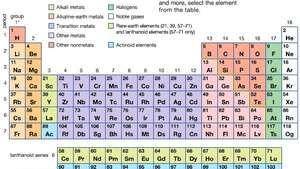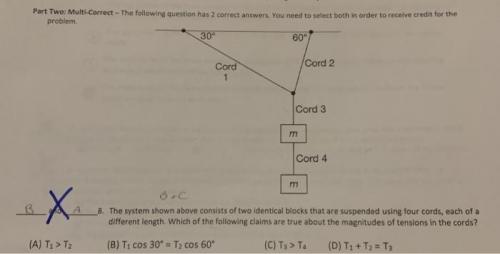 1
1 Answer:
Metallic characterStep-by-step explanation:
As size decreases so metallic character decreases.
 1
1 A. number of protons increases, and the number of shells of electrons
remains the same.
Explanation:
The number of protons increases as you go from left to right in a period. That increases the number of positive charges in the nucleus. The number of negatively charged electrons in the last shell also increases but the number of shells remains the same. The increasingly positive nuclear charge attracts the increasingly negative shells. The result is the atomic radius decreases as the atomic number increases in a period.

 1
1 A. number of protons increases, and the number of shells of electrons
remains the same.
Explanation:
The number of protons increases as you go from left to right in a period. That increases the number of positive charges in the nucleus. The number of negatively charged electrons in the last shell also increases but the number of shells remains the same. The increasingly positive nuclear charge attracts the increasingly negative shells. The result is the atomic radius decreases as the atomic number increases in a period.

smaller, greater
Explanation:
Moving from left to right in the periodic table, we notice that the magnitude of nuclear charge increases with increasing atomic number.
Recall that across the period, nuclear charge increases without a corresponding increase in the number of shells hence the size of the atom (atomic radius) contracts due to a greater pull of the nuclear charge on the electrons.
smaller, greater
Explanation:
Moving from left to right in the periodic table, we notice that the magnitude of nuclear charge increases with increasing atomic number.
Recall that across the period, nuclear charge increases without a corresponding increase in the number of shells hence the size of the atom (atomic radius) contracts due to a greater pull of the nuclear charge on the electrons.

Independent variable: the best method to get rid of them.
Dependent variable: washing with soap and water.
Hypothesis: Organic oils
Control group: water
Answer:
Option DStep-by-step explanation:
D.
Heat each cube to the same temperature, place each cube into different containers with 500 grams of water at the same temperature, and measure the temperature of the water.
Answer:
9.6 metersStep-by-step explanation:
Time taken by the tomatoes to each the ground
using h = 1/2 g t^2
t^2 = 2h/g = 2 x 50/ 9.8 = 10.2
t = 3.2 sec
horizontal ditance = speed x time = 3 x 3.2 = 9.6 meters

It will provide an instant answer!
